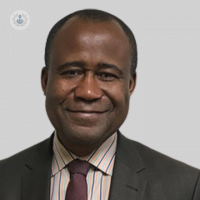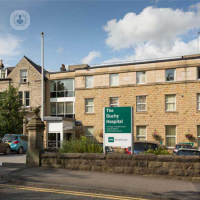Spinal disc replacement
Mr Robert Lovell - Orthopaedic surgery
Created on: 11-13-2012
Updated on: 09-11-2023
Edited by: Jay Staniland
What is spinal disc replacement surgery?
A disc prosthesis, also known as spinal disc replacement surgery, is the replacement of an intervertebral disc for a device that is able to maintain mobility between both lumbar vertebrae, and is carried out by a specialist spinal surgeon or neurosurgeon.
Disc replacement surgery mainly involves surgically replacing the intervertebral disc with an articular segment prosthesis.

Why would spinal disc replacement surgery be required?
This procedure is usually carried out on people who have initial intervertebral degenerative disc disease, in other words, lumbar degenerative discopathy or disc instability, often referred generally as hypermobility.
The main advantage of this type of surgery is that it allows spinal mobility in cases of severe disc degeneration, as opposed to spinal fusion surgery.
After surgery, patients are usually able to go back to a normal life and even carry out activities that they weren’t able to do before the discomfort began.
What does spinal disc replacement surgery involve?
This surgical procedure involves surgically removing the damaged spinal disc, and inserting an artificial disc in the space.
The disc that is inserted is designed to maintain mobility in the area and along the spine. Its design aims for it to function as a normal joint would, allowing rotation, extension, and flexion, as well aligning with the curve and height of a natural disc.
The procedure is usually performed minimally-invasively, with the incision being no longer in length than 5 centimetres. Once the surgeon has reached the spine, the area to be treated is opened, the damaged disc is removed as well as the bone material surrounding the neuralgic structure to provide more space. This technique is called a discectomy and decompression.
After this, the prosthetic disc is inserted in the space created.
How to prepare for spinal disc replacement surgery
Before the procedure, as with any surgical procedure, the patient will be examined and a patient evaluation will be carried out by the surgeon.
The patient will usually be required to go to the clinic or hospital on the day of the surgery, and are usually required not to eat or drink in the hours prior to the procedure. The surgery will take around one hour to perform, and after the surgery the patient will be sent to a recovery room where doctors will keep a close eye on them. The clinic and specialist that you choose will explain in more depth what to expect from the surgery.
Post-operative care
If the operation was successful and there weren’t any complications, the patient will generally remain in hospital for a couple of days under observation.
By the third day, patients are usually discharged from hospital and can carry out their day to day activities, providing they take care not to overdo activities.
Around ten days or a fortnight after surgery, the stitches will be taken out, and rehabilitation will be done on an outpatient basis.
Around two months after surgery, most patients can return to normal life.
Alternatives to spinal disc replacement surgery
The main alternative to a disc prosthesis is disc fusion surgery, which involves fusing the vertebrae with screws and plates. This type of surgery tends to yield good results, even though the vertebrae remain fixed.
For more information, you can book an appointment with a surgical specialist.









